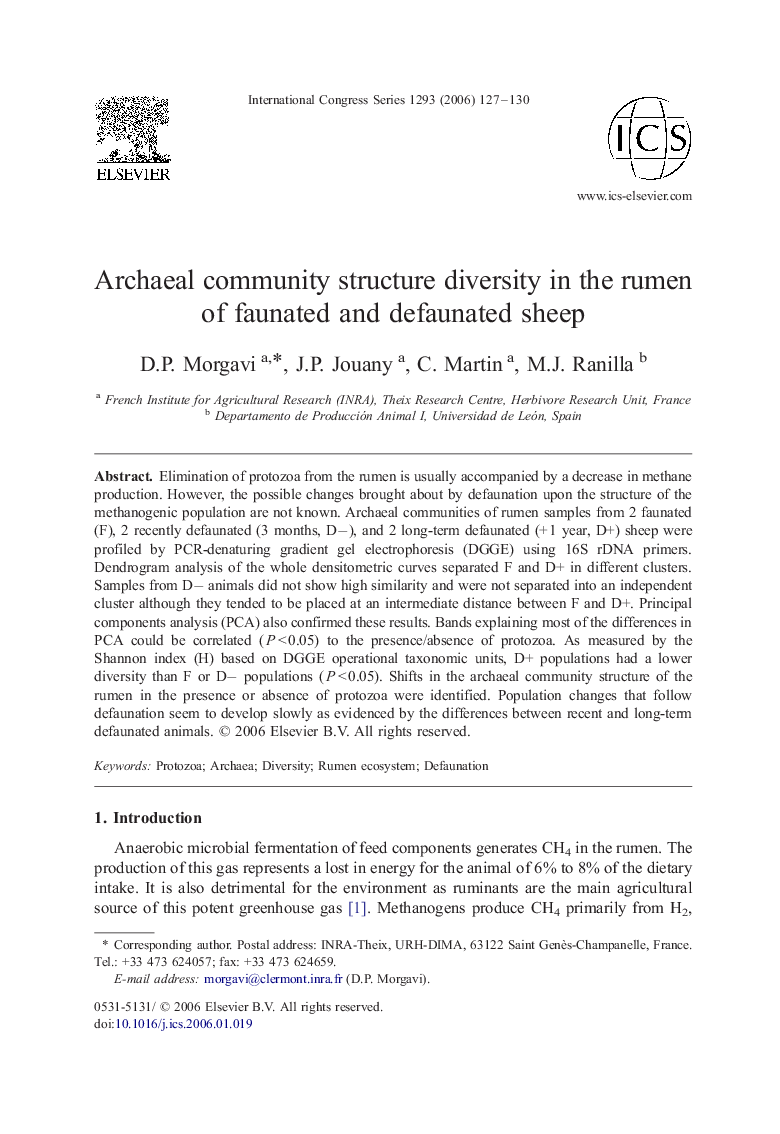| Article ID | Journal | Published Year | Pages | File Type |
|---|---|---|---|---|
| 2577070 | International Congress Series | 2006 | 4 Pages |
Elimination of protozoa from the rumen is usually accompanied by a decrease in methane production. However, the possible changes brought about by defaunation upon the structure of the methanogenic population are not known. Archaeal communities of rumen samples from 2 faunated (F), 2 recently defaunated (3 months, D−), and 2 long-term defaunated (+ 1 year, D+) sheep were profiled by PCR-denaturing gradient gel electrophoresis (DGGE) using 16S rDNA primers. Dendrogram analysis of the whole densitometric curves separated F and D+ in different clusters. Samples from D− animals did not show high similarity and were not separated into an independent cluster although they tended to be placed at an intermediate distance between F and D+. Principal components analysis (PCA) also confirmed these results. Bands explaining most of the differences in PCA could be correlated (P < 0.05) to the presence/absence of protozoa. As measured by the Shannon index (H) based on DGGE operational taxonomic units, D+ populations had a lower diversity than F or D− populations (P < 0.05). Shifts in the archaeal community structure of the rumen in the presence or absence of protozoa were identified. Population changes that follow defaunation seem to develop slowly as evidenced by the differences between recent and long-term defaunated animals.
